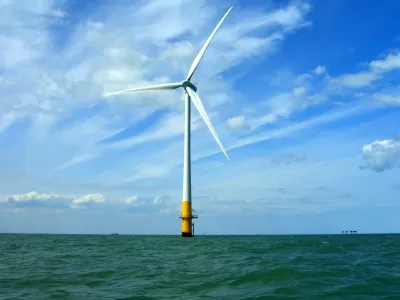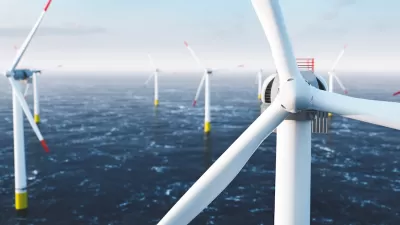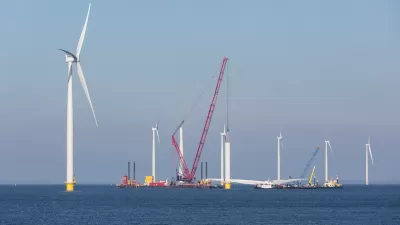A "priority offshore wind zone" between Long Island and New Jersey could accelerate permits and help the industry gain a foothold in the United States.

As part of the Biden administration's efforts to increase the use of renewable energy sources, a new proposal "would designate an area between Long Island and New Jersey as a priority offshore wind zone and sets a goal of installing 30,000 megawatts of offshore wind turbines in coastal waters nationwide by 2030, generating enough clean electricity to power 10 million homes."
Lisa Friedman and Brad Plumer report that the administration wants to "accelerate permitting for proposed wind projects off the Atlantic coast, offer $3 billion in federal loan guarantees for offshore wind projects and upgrade the nation’s ports to support wind construction" in order to promote the industry. Officials say the offshore wind industry could "directly create 44,000 new jobs, such as building and installing turbines, and indirectly create another 33,000."
In February, "the Biden administration took a key step in approving the nation’s first large-scale offshore wind farm, off the coast of Martha’s Vineyard in Massachusetts." The project includes "84 large turbines with 800 megawatts of electric generating capacity" and "is slated to come online by 2023." Twelve other proposed offshore wind projects on the East Coast are awaiting approval.
FULL STORY: The Biden administration makes a swath of ocean between New York and New Jersey an offshore wind zone.

Study: Maui’s Plan to Convert Vacation Rentals to Long-Term Housing Could Cause Nearly $1 Billion Economic Loss
The plan would reduce visitor accommodation by 25,% resulting in 1,900 jobs lost.

North Texas Transit Leaders Tout Benefits of TOD for Growing Region
At a summit focused on transit-oriented development, policymakers discussed how North Texas’ expanded light rail system can serve as a tool for economic growth.

Why Should We Subsidize Public Transportation?
Many public transit agencies face financial stress due to rising costs, declining fare revenue, and declining subsidies. Transit advocates must provide a strong business case for increasing public transit funding.

How to Make US Trains Faster
Changes to boarding platforms and a switch to electric trains could improve U.S. passenger rail service without the added cost of high-speed rail.

Columbia’s Revitalized ‘Loop’ Is a Hub for Local Entrepreneurs
A focus on small businesses is helping a commercial corridor in Columbia, Missouri thrive.

Invasive Insect Threatens Minnesota’s Ash Forests
The Emerald Ash Borer is a rapidly spreading invasive pest threatening Minnesota’s ash trees, and homeowners are encouraged to plant diverse replacement species, avoid moving ash firewood, and monitor for signs of infestation.
Urban Design for Planners 1: Software Tools
This six-course series explores essential urban design concepts using open source software and equips planners with the tools they need to participate fully in the urban design process.
Planning for Universal Design
Learn the tools for implementing Universal Design in planning regulations.
Ascent Environmental
Borough of Carlisle
Institute for Housing and Urban Development Studies (IHS)
City of Grandview
Harvard GSD Executive Education
Toledo-Lucas County Plan Commissions
Salt Lake City
NYU Wagner Graduate School of Public Service





























